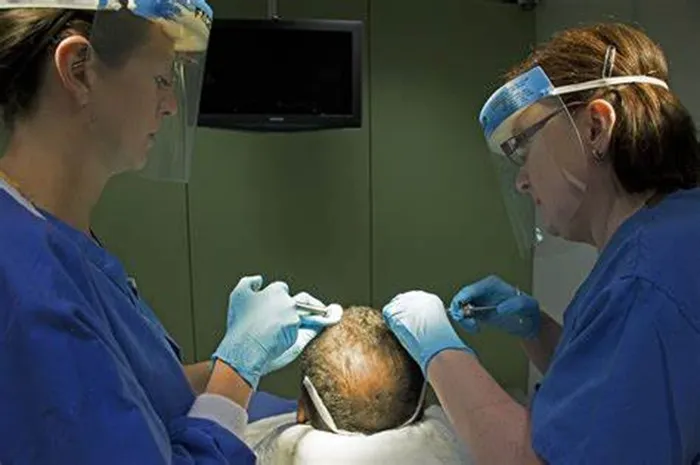Hair transplant surgery is a popular and effective solution for individuals experiencing hair loss. However, one of the most common concerns patients have before undergoing this procedure is whether it will hurt. Understanding the process, the pain management techniques used, and what to expect during and after the surgery can help alleviate these concerns and prepare you for a more comfortable experience.
Understanding the Hair Transplant Procedure
Hair transplant surgery involves relocating hair follicles from a donor area (usually the back or sides of the head) to a recipient area where hair loss has occurred. The two primary techniques used are Follicular Unit Extraction (FUE) and Follicular Unit Transplantation (FUT). Both methods aim to restore hair growth in balding or thinning areas, but they differ in their approach and potential discomfort levels.
Follicular Unit Extraction (FUE)
FUE is a minimally invasive technique that involves extracting individual hair follicles from the donor area using a micro-punch tool. These follicles are then transplanted into the recipient area. FUE is known for its minimal scarring and faster recovery time, making it a popular choice for many patients.
Follicular Unit Transplantation (FUT)
FUT, also known as the strip method, involves removing a strip of scalp tissue from the donor area and dissecting it into individual follicular units. These units are then transplanted into the recipient area. FUT allows for a larger number of grafts to be harvested in a single session, making it suitable for patients with extensive hair loss.
Pain Management During the Procedure
Local Anesthesia
Both FUE and FUT procedures are performed under local anesthesia, which means you will be awake but the surgical area will be numbed. The anesthetic is administered to the donor and recipient areas to ensure you do not feel any pain during the surgery. The most common anesthetic used is a combination of lidocaine and epinephrine, which effectively numbs the scalp and reduces bleeding.
Sedation
In addition to local anesthesia, some clinics offer mild sedation to help patients relax during the procedure. Sedation can be particularly beneficial for patients who are anxious or have a low pain tolerance. However, it is important to note that sedation is not always necessary and should be discussed with your surgeon beforehand.
Pain During Anesthesia Administration
The administration of local anesthesia is the part of the procedure where you may experience some discomfort. The initial injection can cause a slight stinging or burning sensation as the anesthetic is administered. However, this discomfort is usually short-lived and subsides quickly as the area becomes numb.
Pain Levels During the Procedure
FUE Procedure
During an FUE procedure, you may feel some pressure or tugging as the follicles are extracted, but this should not be painful. The use of local anesthesia ensures that the surgical area is numb, minimizing any discomfort. Most patients report feeling relaxed and comfortable throughout the procedure.
FUT Procedure
In a FUT procedure, the initial incision to remove the strip of scalp tissue can cause some discomfort, but this is typically well-managed with local anesthesia. Once the strip is removed, the area is sutured, and the discomfort should be minimal. The dissection of follicular units under a microscope is performed outside the body, so you will not feel any pain during this part of the procedure.
Pain Management After the Procedure
Medications
Your surgeon will likely prescribe pain medications to help manage any discomfort during the initial recovery period. These medications can be taken as directed to alleviate pain and ensure a more comfortable recovery.
Swelling and Discomfort
Swelling in the forehead and around the eyes is common in the first few days after surgery. Applying cold compresses can help reduce swelling and alleviate discomfort. Keeping your head elevated while sleeping can also minimize swelling.
Itching and Tingling
As the scalp heals, you may experience itching or tingling sensations. These are normal signs of healing but should be managed carefully to avoid dislodging the transplanted grafts. Avoid scratching or rubbing the scalp and instead gently pat or tap the area if needed.
Conclusion
Hair transplant surgery is generally not painful due to the use of local anesthesia and effective pain management techniques. While you may experience some discomfort during the initial post-operative period, this can be well-managed with prescribed medications and proper aftercare. Understanding the recovery timeline and adhering to post-operative care instructions are crucial for ensuring a comfortable and successful outcome.
If you have concerns about pain or discomfort during your hair transplant journey, consult with your hair transplant specialist. They can provide personalized advice and support to help you achieve the best possible results. By understanding what to expect and taking proactive steps to manage discomfort, you can enjoy a more comfortable and successful hair transplant experience.
Related topics:


